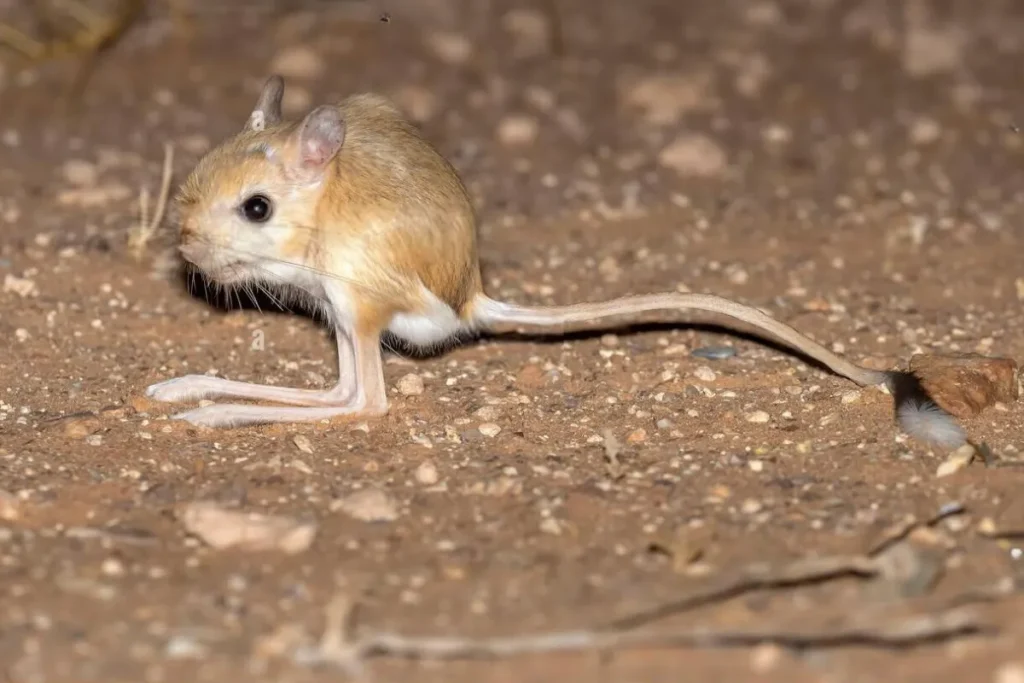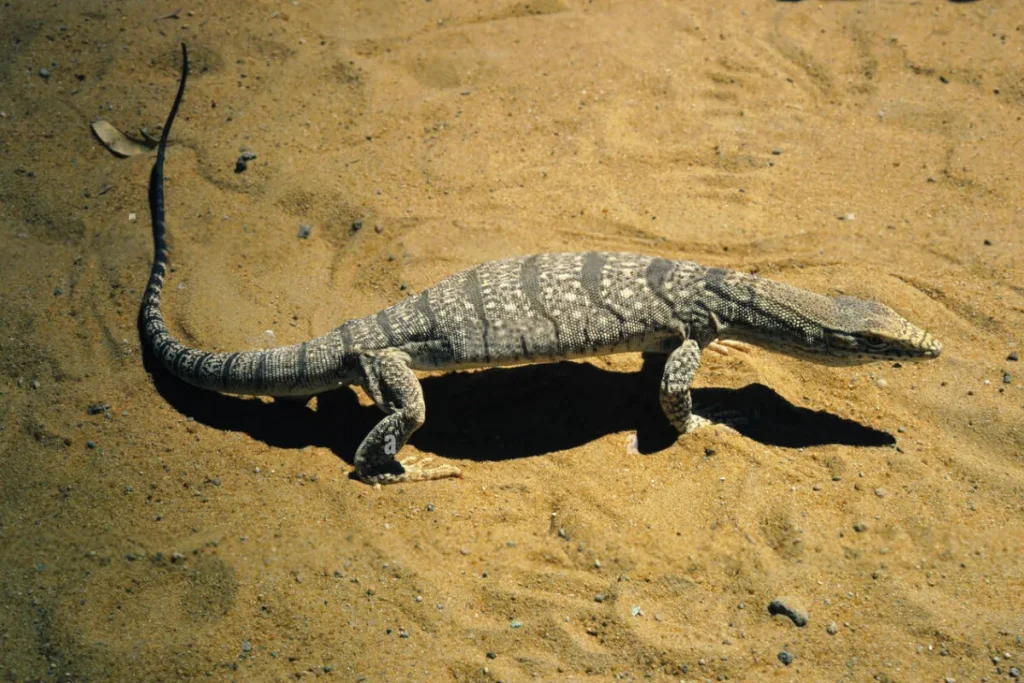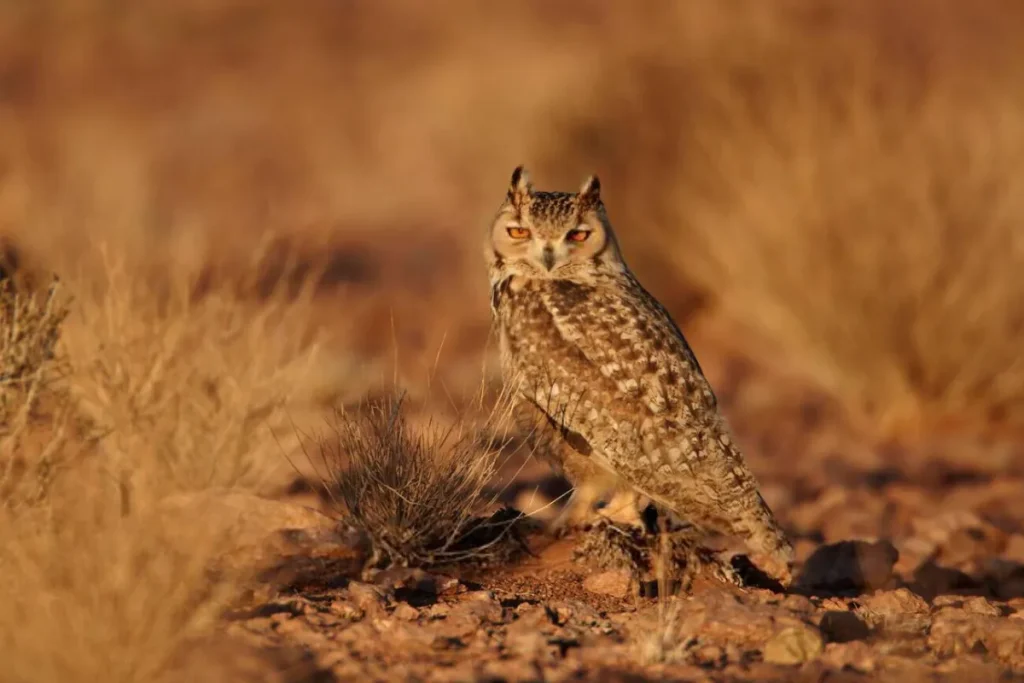The Foundation of Desert Life
At the base of Merzouga’s food chain, desert plants create the foundation for all animal life. Hardy grasses, desert spurge, and acacia trees provide sustenance for primary consumers. During brief rain periods, these plants burst into life, triggering a cascade of activity throughout the food chain. Even in the driest times, desert plants maintain enough moisture to support the smallest herbivores, from tiny beetles to foraging rodents.

Primary Consumers
Desert rodents form the crucial middle layer of the food pyramid. Gerbils and jerboas emerge at night to feed on seeds and vegetation, while desert hares browse on tougher plants. Their highly efficient digestive systems extract maximum nutrition and moisture from every morsel. Desert locusts, darkling beetles, and various grasshoppers process plant material and detritus, maintaining the desert’s nutrient cycle. These small creatures convert plant material into protein, supporting the desert’s larger predators.

The Hunters
Among the desert’s most impressive predators, the desert monitor stands out as a masterful hunter. This powerful lizard, reaching impressive lengths, hunts with calculated precision. Its forked tongue constantly samples the air, seeking prey both above and below ground. Unlike many desert predators, it actively hunts during daylight, taking everything from venomous snakes and rodents to birds’ eggs and even smaller monitors. Their hunting prowess showcases the complexity of desert predation, where one species can fill multiple predatory roles.
The desert’s snakes present a diverse group of skilled hunters. Horned vipers lie perfectly camouflaged in the sand, ambushing passing rodents with lightning-fast strikes. Elegant sand snakes and beautiful diadem snakes actively pursue their prey, specializing in catching lizards and rodents with remarkable precision. These reptilian predators control rodent populations while themselves serving as prey for larger hunters, including the monitor lizards.
Desert predators demonstrate remarkable hunting adaptations. Fennec foxes use their extraordinary hearing to locate prey beneath the sand, targeting everything from beetles to sleeping birds. Sand cats stalk with absolute silence across the dunes, their specialized paw pads leaving barely a trace. Even the desert hedgehog joins the night hunt, fearlessly taking on scorpions and small snakes. Swift fringe-toed lizards add to this hunting scene, dashing across the sand to catch insects and smaller lizards with incredible speed.
Birds of prey add another dimension to this hunting hierarchy. Eagle owls emerge at dusk, powerful enough to take small foxes and large snakes, while kestrels hover by day, scanning for lizards and rodents. Their keen eyesight and aerial abilities bring another set of hunting skills to the desert ecosystem.

Opportunistic Survivors
Golden jackals and brown-necked ravens demonstrate the importance of adaptable feeding strategies. These clever opportunists might hunt small prey one day and scavenge the next. Their flexibility helps maintain desert health by consuming carrion and keeping other populations in check. Even the largest predators will adapt their diet seasonally, switching prey as availability changes.

Nature's Balance
The desert food chain reveals remarkable equilibrium. Predator populations naturally adjust to prey availability, while prey species show impressive reproductive rates that help maintain their numbers. During lean periods, each member of the food chain displays remarkable adaptation. Predators can survive on minimal food intake, while prey species adjust their reproduction rates according to resource availability.

Seasonal Shifts
The food chain’s dynamics shift with the desert’s seasons. Brief rainfall periods trigger abundance, with increased plant growth supporting larger prey populations. During drier times, the system contracts but maintains its essential functions through the species’ remarkable adaptations to scarcity.

The intricate relationships between predator and prey in Merzouga’s desert demonstrate nature’s efficiency in harsh environments. Each species, from the smallest insect to the top predator, contributes to a finely tuned system where survival depends on perfect adaptation and precise timing.


